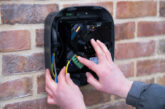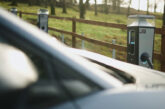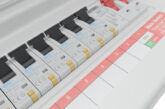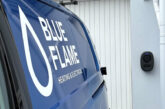
Daniel Forsberg, CTEK’s Marketing Manager EVSE, discusses the increasing need for chargepoint solutions to provide futureproofing capability that will ensure sustainability from EV installations.
EVs are all about sustainability, cutting carbon and clean mobility. When powered by electricity from renewable sources, the impact they’re making on our shared road to net zero is substantial and growing.
To make EVs as positive a contributor as possible, the whole ecosystem they exist in must also play its part. From how the electricity is generated to reducing wastage in supply equipment and enabling Vehicle to Grid (V2G) bi-directional charging, there are sustainability wins to be had at every turn.
When we were designing our newest chargepoint (the CC3), we thought long and hard about how to make it as futureproofed as possible, knowing that doing so would enhance the sustainability of our product and the installations where it is used.
We believe all installers and their clients – from homeowners to landlords, destinations to local authorities and chargepoint operators – should have longevity and flexibility in mind when specifying EV charging solutions.
Does the unit they’re going to install have the capabilities needed not just for today’s charging needs but for the opportunities of tomorrow? Is the hardware futureproofed for the next wave of EV charging capabilities? Can it handle the software coming down the track?
Installers will want their clients to have confidence that their new EV charging installation is going to function as well (or, ideally, better) in three years’ time as it will on the day it is first plugged in.
So, what should installers and their clients be looking for when considering an investment in chargepoint equipment?
Standards and protocols
To take advantage of the opportunities to supply electricity back to the grid, chargepoints should support the international standard ISO15118 which is a leap forward for EV-to-chargepoint communication. Among the advances it enables are:
• Plug & Charge: automated vehicle identification and billing for charging sessions.
• V2G: bi-directional charging for EV drivers to be paid for discharging electricity to the grid at times of peak demand.
• Dynamic Charging Mode: introducing a dynamic control mode alongside the existing scheduled mode, allowing for more nuanced control over charging processes.
• Security: enhanced data protection closes existing loopholes, protecting user data and payment information.
• Multi-contracts: simplifying the management of multiple e-mobility contracts, allowing users to seamlessly switch between different charging contracts based on location.
Meanwhile, chargepoints should also support OCPP (Open Charge Point Protocol) 2.0.1, ensuring smooth interaction with a whole host of current and future third-party hardware and software.
Future smart buildings will integrate EV charging with external battery storage and generation, such as solar, with some existing properties already having this in place.
OCPP 2.0.1 compliant equipment prevents customers being boxed in and having to rely on the service from, or continued existence of, just one provider. They can change their back-end provider for payment and monitoring and expand with additional chargepoints from different manufacturers. The longevity of hardware will also be enhanced by a range of connectivity technology, so you should look for chargepoints that can communicate via ethernet cable and WiFi. Alternatively, 4G communication is useful for remote sites, especially with some older chargepoints that are equipped with 3G now starting to fail.
Repairability
UK roadsides and car parks already have too many obsolete and broken chargepoints that are uneconomical to repair or terminally compromised for future use. These tombstones are a sad memorial to wasteful technology that was not futureproofed.
So, look for charging equipment that can be easily serviced and, if necessary, repaired. Find out if a chargepoint has replaceable standardised components such as the contactor, RCD, fuse, socket or fixed charging cable. Indeed, sockets and cables can experience significant wear and tear in high use environments such as public car parks.
Upgrading
Installers and their clients should be thinking about current EV charging needs as well as future demand. As more multi-car households invest in multiple EVs, home chargepoints with dual outlets will become desirable, so choosing one now is an easy futureproofing win.
For non-domestic properties which currently have a single phase supply, upgrading to three phase in the future opens up the potential for faster charging for one or more EVs. Again, specifying hardware now that can handle three phase supply, as well as single phase, will futureproof the installation, as you can keep existing hardware rather than buying and installing again.
Robustness
Charging points installed in public areas such as car parks should have a minimum IK08 rating for impact protection and an Ingress Protection (IP) rating of IP54 to keep out dust and rain. These physical protections complement the digital cybersecurity of encrypted communication and unique passwords.
Look for long and extendable warranties, plus in-country support for pre- and post-installation advice and guidance. Training for installers, which can be free, will ensure smoother installations and trouble-free operation.
Get more details about CTEK’s free training for installers here
Read more industry feature articles here










